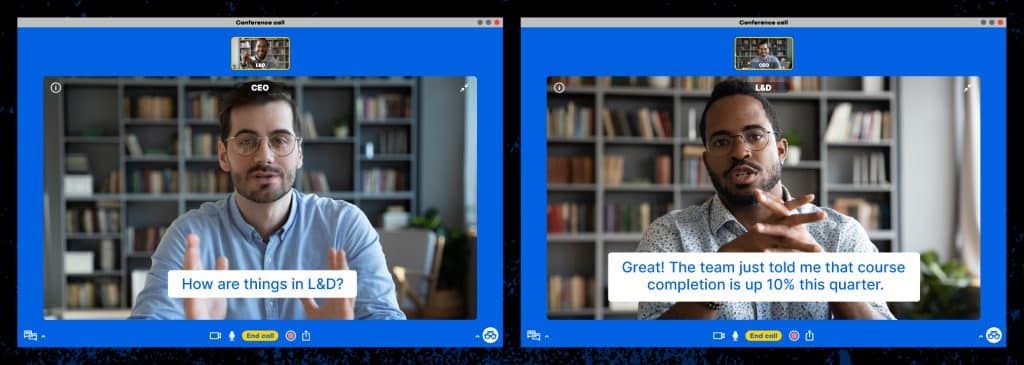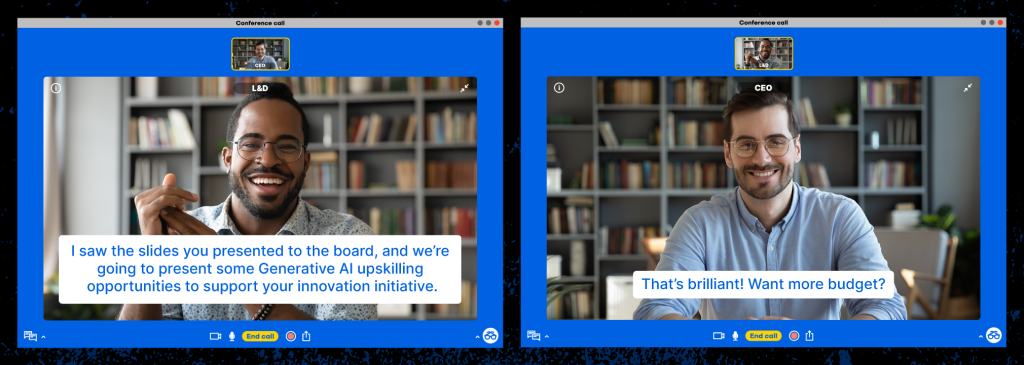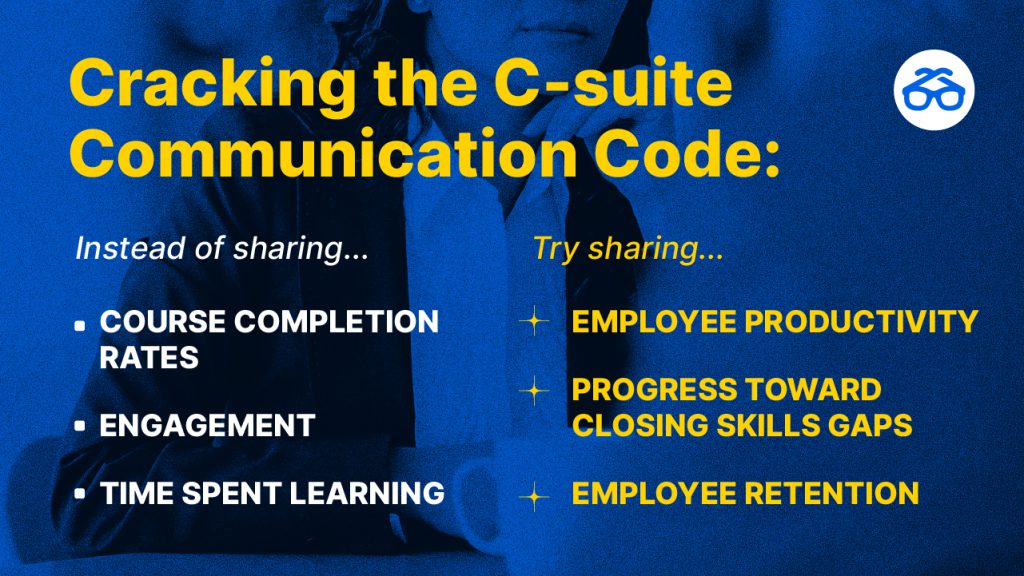Are most L&D strategies aligned with the business?
It’s difficult to say. The most accurate metric we have on the topic is The Brandon Hall Group 2020 Learning Strategy Study, and the results aren’t reassuring. While almost all L&D leaders [87%] agree that business alignment is critical, “only 13% said they were ready to take action on creating it.”
Clearly, there is room for improvement. But L&D does so many great things to help the business, surely there is more alignment than this statistic shows? Perhaps there is more alignment that either side knows—it’s just the message is lost in translation.
Your L&D could be aligned with the business, but maybe you’re just not using the right words or metrics. To truly understand how aligned L&D and leadership are, L&D first needs to learn to speak the language of the business.
L&D-ism and Metrics aren’t impressive to C-suite.
Imagine you’re in a Zoom waiting room with only your CEO. They ask how things are going in L&D. In the 15 seconds before anyone else joins the call, you say, “Great! The team just told me that course completion rates are up 10% this quarter.”

While that metric might impress a fellow L&D professional, it won’t impress your CEO. In fact, it’s likely your CEO would follow up with, “Okay, but how does that help our business? And the CEO would have to ask those questions—not because they’re trying to throw shade or be difficult—but because they genuinely wouldn’t understand what an increase in course completion rates means for the business.
So what’s wrong with this Zoom exchange? A disconnect between L&D and other business units persists because activities like “the learning experience” and metrics like “participation rate” are almost exclusively cited and understood in L&D circles. It’s like a a regional dialect; travel to another place and the meaning and significance of L&D-ism are lost.
L&D matters when it speaks the language of business.
What language should L&D use when speaking to the C-suite? The language C-suite uses and understands. Does this mean you have to use cringe-worthy words like “synergy?” That depends. If your leadership consistently uses terms like “initiatives,” “business outcomes,” or “KPIs” then consider using those. But don’t use business jargon for the sake of business jargon. Remember, it’s all about clear communication.
So let’s consider that Zoom interaction again—this time using business language:

Notice that not only does the example use a leadership favorite term, “business strategy,” but the takeaway is that L&D is aligning with the business goals. The reason you are using leadership metrics and language is to demonstrate that you understand what they want and that you’re helping them achieve it.
Even your L&D metrics need to be translated.
Along with the right language, L&D also needs to translate its metrics for leadership. In a LinkedIn article, Paul Petrone and Allaya Cooks-Campbell explain that “measuring utilization and completion rates tells the company one thing—how frequently users are engaging with their training programs. It doesn’t tell them how effective the training is at improving employee experience or impacting the bottom line.”
Because the traditional L&D metrics don’t include the ROI leadership craves, L&D must use different metrics when talking to leadership. Now don’t misread this: this is in no way an argument that L&D should abandon all its traditional L&D metrics. Knowing the utilization of a learning tool, rate of learning, or rate of completion is effective in understanding the efficacy of your program from an L&D perspective. But when you talk to leaders in the C-suite, they don’t want to know how well the program is going. They want to know how it affects their bottom line.
What are the best metrics to use? When in doubt, connect learning to money saved, money earned, and risks reduced. Also look at the specific metrics that your leadership constantly uses and discusses. Look at KPIs and business metrics to find ways to connect learning to the bigger business picture.
Susie Lee, SVP & Client Innovation Officer at Degreed, explains this best in her article, “The New Learning Metrics: Demonstrating Business Value and Impact.” She argues that “new learning metrics are less transtional. They deemphasize time spent learning and focus more on usage through a lens of workforce engagement. They look at social learning and consider content. They address the skills your people have and those they need. And they convey how all of these data points influence the results that matter to your stakeholders, not just your learning, talent, and HR teams.”

Ready to learn more?
Don’t just ask questions on the off-chance you’ll get stuck in a Zoom waiting room with an executive. Speaking C-suite is a skill you should use in all your interactions with leadership. A great example of how you can use this new skill is when you pitch new learning initiatives to leadership.
Watch a recent webinar, Speaking C-Suite: How To Tie Learning to Business Outcomes, to explore how HR, L&D, and Talent professionals can think, measure, and speak about learning in ways that resonate better with leadership.
Tania Palen, a Director of Talent Management at Five9, will share a step-by-step process for preparing a winning business case for your L&D initiatives.
In this webinar, you’ll learn to:
- Frame the business opportunity.
- Define the right learning metrics to build your case for change.
- Bring it all together in a compelling, relevant narrative.

